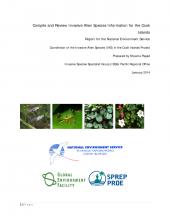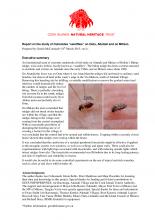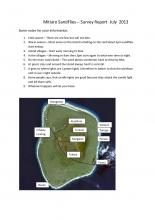The status of the coral reefs and marine resources of Samoa

Island and Ocean Ecosystems
Bell, Lui J.
,
Mulipola, Atonio
,
Skelton, Posa A.
,
Trevor, Anne
The coral reefs of Samoa are limited and fringing in nature due to past volcanic activities and subsequent sea level rise. The near-shore reef fisheries are degraded, however, they continue to provide for the well being of the people. The coral reef systems have recovered considerably since the cyclones in the early 1990s, with healthy and lush coral diversity seen in many reef front areas. The current knowledge of the marine biodiversity is inadequate with past studies largely undertaken by foreign scientists. The marine flora is better known that the fauna, however the fishes of Samoa have been thoroughly documented. Of the known species, the fishes consist of 991 species, benthic algae 287 species, coastal littoral plants 76, 3 mangrove communities, 2 seagrass species and 3 marine turtles. A number of target species for fisheries have declined over the years which include marine turtles, giant clams, giant triton, grey mullets, milkfish, and mangrove crabs. There are no known endemic or rare organisms, which may be partly attributed to the lack of knowledge on the marine biodiversity. There is only one extinct species known, the giant clam Hippopus hippopus, with shell s and shell fragments found in some parts of Samoa.




